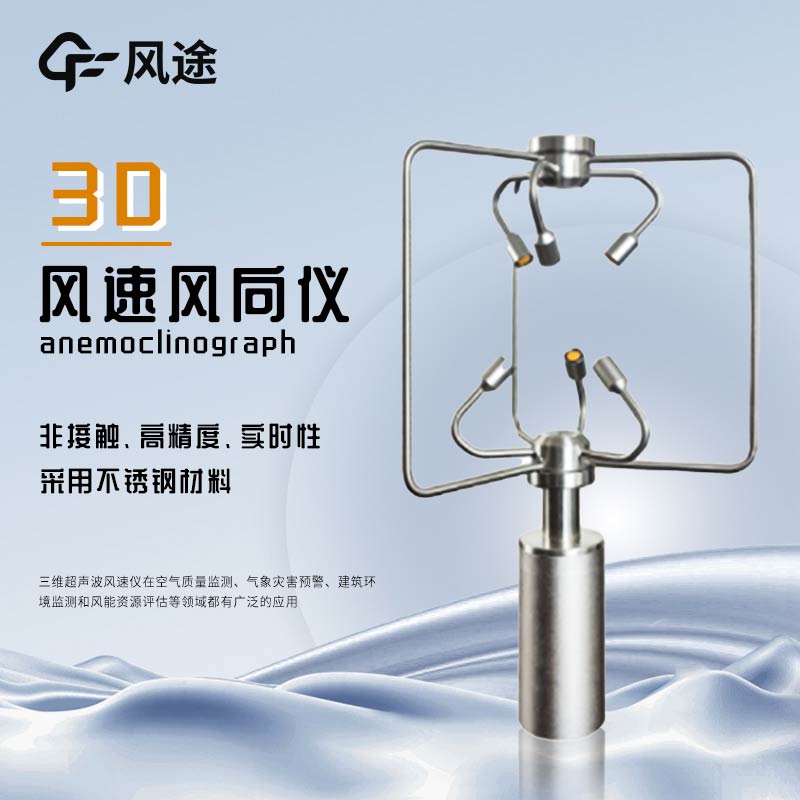Tianyi Sensor IOT Technology Co., Ltd
Sales Manager:Ms. Emily Wang
Cel,Whatsapp,Wechat:+86 15898932201
Email:info@fengtutec.com
Add:No. 155 Optoelectronic Industry Accelerator, Gaoxin District, Weifang, Shandong, China

Sales Manager:Ms. Emily Wang
Cel,Whatsapp,Wechat:+86 15898932201
Email:info@fengtutec.com
Add:No. 155 Optoelectronic Industry Accelerator, Gaoxin District, Weifang, Shandong, China
time:2025-05-08 09:45:35 source:Weather Station viewed:146 time
In numerous meteorological monitoring and related fields, accurately measuring wind speed and direction is of great significance. From the perspective of large-scale meteorological research, understanding accurate data of wind speed and direction helps meteorological departments better predict weather changes. For example, during the movement of air masses and the advancement of fronts, changes in wind speed and direction are one of the key factors, providing strong support for the accuracy of weather forecasts. In local areas, for agricultural production, wind speed and direction affect the precision of agricultural spraying operations, avoiding excessive drift of pesticides or fertilizers. In industries such as construction and industry, grasping wind speed and direction is crucial for safe production. For example, the operational safety of large equipment like tower cranes needs to be guaranteed based on real-time wind speed and direction conditions.
Upon in-depth research, it is found that simply measuring two-dimensional wind speed and direction can no longer meet the needs of many complex scenarios, which leads to the question of why three-dimensional wind speed and direction should be measured. In complex terrains, such as mountainous areas and urban areas with numerous high-rise buildings, airflows will undergo complex three-dimensional movements affected by obstacles. In such cases, if only the horizontal wind speed and direction in two dimensions are considered, the true state of the airflow cannot be fully presented. In the field of scientific research, for example, in the in-depth exploration of the structure of the atmospheric boundary layer, three-dimensional wind speed and direction are indispensable parameters, helping scientists accurately analyze key elements such as the structure of turbulence and energy exchange.
The 3D Ultrasonic Anemometer realizes the measurement of three-dimensional wind speed and direction by using the time difference of ultrasonic waves propagating in airflows in different directions. Multiple ultrasonic probes are installed according to a specific spatial layout, and through an accurate time difference measurement algorithm, it can simultaneously obtain the wind speed components in three directions, thus accurately calculating the three-dimensional wind speed and direction.
It overcomes many drawbacks of mechanical anemometers. For example, it has no problem of mechanical wear, can achieve inertia-free measurement, and has advantages such as high resolution, fast response, good weather resistance, and long-term stability. It is widely used in fields such as meteorological monitoring, environmental research, wind farm operation, and urban planning.

The IV curve, or current-voltage curve, visually demonstrates the current output of a photovoltaic (PV) cell or module at different voltages. Through this curve, core parameters such as open-circuit voltage, short-circuit current, and maximum power point can be obtained. These parameters are crucial...
Some enterprises, in order to reduce wastewater treatment costs, secretly discharge untreated sewage directly into the external environment or municipal pipelines through illicitly installed concealed pipes. For example, a company in an industrial park discharged high-concentration phenol-containing...
Why measure the flow velocity of a river?First, it provides data support for water resources management. By mastering the river flow velocity, water resources can be rationally allocated to ensure the water demand for daily life and production.Second, it helps with flood control and disaster reducti...
The hand-held radar current meter works based on the Doppler effect principle. The radar probe of the instrument emits 24GHz microwave signals, which will be reflected when they hit the flowing water surface. Since the water surface is in a flowing state, the frequency of the reflected signals will...